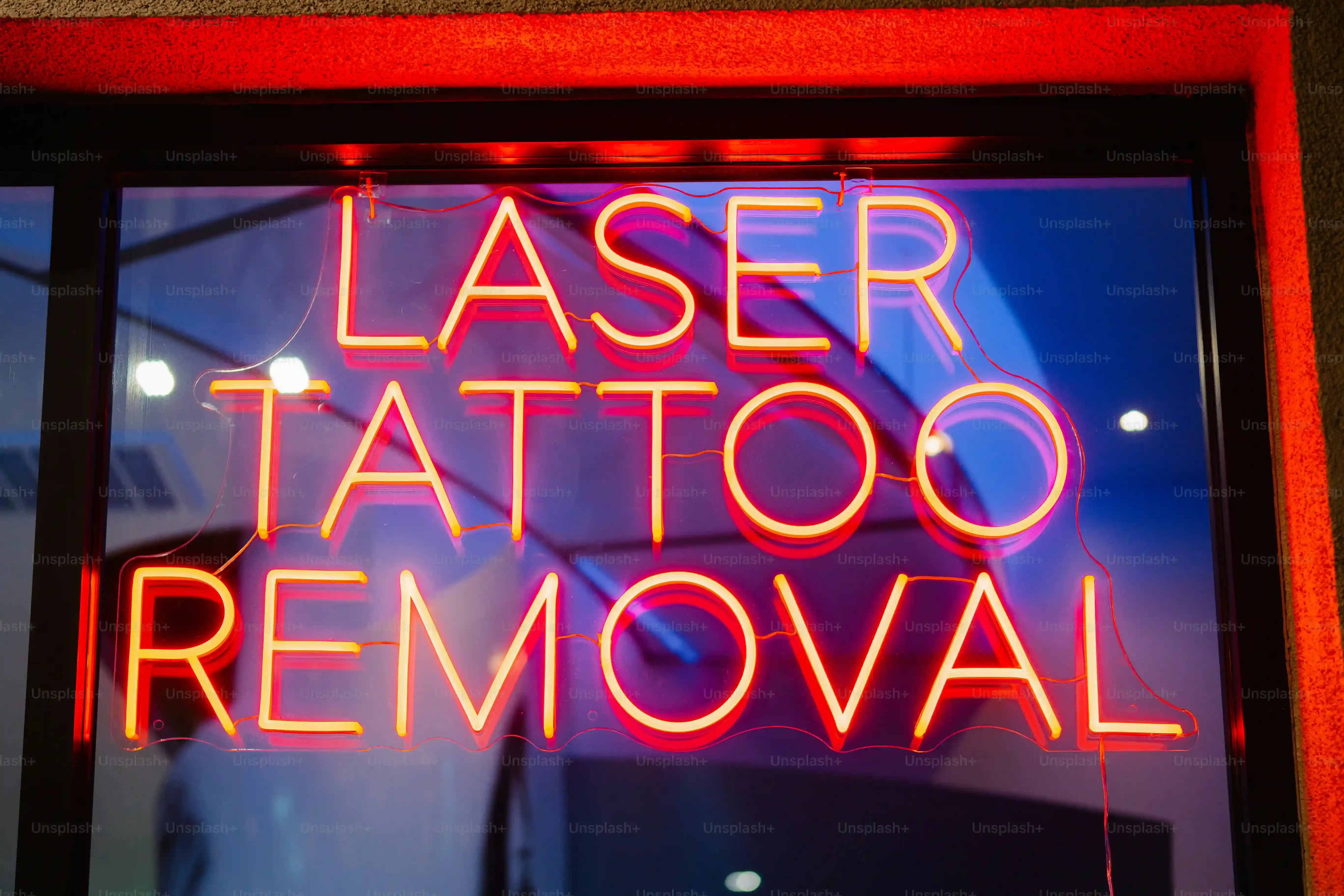Table of Contents
Tired of the endless cycle of shaving, waxing, or plucking? You're not alone. That quest for perpetually smooth skin often feels like a full-time job, especially when warmer weather rolls around. Laser hair removal offers a promising escape from that routine, providing a longer-lasting solution to unwanted hair. But before you jump in, there's a question that pops up for many people considering the treatment: what is the best time of year for laser hair removal?
Why the Season Impacts Your Laser Hair Removal Results
Sun Exposure and Skin Sensitivity
so you're thinking, "Laser, hair, what's the big deal about the calendar?" Turns out, it's a pretty big deal. Laser hair removal works by targeting the pigment (melanin) in your hair follicles. The laser energy heats up the melanin, damaging the follicle and preventing future growth. Simple enough, right? Here's the catch: your skin also contains melanin. When your skin gets a tan, it means your skin cells have produced more melanin as a defense mechanism against UV radiation. This increased melanin in the skin can absorb the laser energy meant for the hair follicle. What happens then? The laser might not be as effective at targeting the hair, and worse, it can potentially damage the surrounding skin, leading to burns, discoloration, or scarring. Suddenly, that summer glow isn't looking so great for your laser plans.
Prepping Your Skin for Treatment
Beyond the immediate risks of lasering tanned skin, seasonal activities often dictate how prepared your skin is for treatment and how well it recovers. Think about it: summer means more time outdoors, more sun exposure (even with sunscreen!), and maybe more sweat and irritation. Winter, on the other hand, usually involves less direct sun exposure, making it easier to keep your skin at its natural, untanned baseline. Plus, the aftercare for laser involves avoiding direct sun and sometimes using soothing creams. Trying to manage that while living at the beach or spending every weekend hiking in the sun? Not exactly ideal. The season influences how easily you can stick to the pre-treatment rule of avoiding sun exposure and the post-treatment need to protect sensitive skin.
Seasonal Considerations for Laser Hair Removal
- Sun Exposure: Tanned skin contains more melanin, increasing risk of side effects.
- Skin Sensitivity: Post-treatment skin is more vulnerable to UV damage.
- Preparation: Avoiding sun exposure for weeks before treatment is easier in certain seasons.
- Aftercare: Protecting treated areas from sun is crucial for healing.
- Consistency: Sticking to a regular treatment schedule is key for best results.
Fall and Winter: The Best Time of Year for Laser Hair Removal

Fall and Winter: The Best Time of Year for Laser Hair Removal
Why Fall Kicks Off the Ideal Laser Season
Alright, so we've established that sun and lasers don't exactly play nice together. This is precisely why fall slides in as the reigning champion for kicking off your laser hair removal journey. Summer's intense rays are fading, beach vacations are winding down, and you're likely spending less time intentionally basking in the sun. Your tan from those warmer months is starting to fade, getting your skin closer to its natural, less melanin-packed state. This makes it much safer and more effective for the laser to target the hair follicle pigment without risking damage to your skin. Starting in the fall gives you a head start on the multiple sessions needed to achieve significant hair reduction.
Winter: The Sweet Spot for Consistency
Following fall, winter doubles down on the advantages. Think about it: layers are your best friend, covering up most of your body. This drastically reduces incidental sun exposure, making it far easier to adhere to the strict sun avoidance required before and after each treatment. Consistency is key with laser hair removal; sessions are typically spaced several weeks apart to catch hairs in their active growth phase. Winter provides a long stretch of low-sun months, creating a stable environment to stick to your scheduled appointments without worrying as much about unexpected sun exposure derailing your progress. This consistent treatment cycle is crucial for hitting those stubborn follicles effectively over time.
Season | Sun Exposure Level | Skin Sensitivity Risk | Consistency Potential |
|---|---|---|---|
Summer | High | Higher (with tan) | Lower (due to sun) |
Fall | Moderate (decreasing) | Moderate (decreasing) | Higher |
Winter | Low | Lower | Highest |
Spring | Moderate (increasing) | Moderate (increasing) | Moderate |
Finishing Strong Before Summer Arrives
One of the biggest perks of starting in the fall and continuing through winter is the timing payoff. A full course of laser hair removal typically involves anywhere from 6 to 8 sessions, sometimes more, spaced 4-8 weeks apart. Doing the math, beginning in October or November means you're likely finishing up your final sessions by late spring. This puts you in the perfect position to enjoy smooth, hair-free skin just as swimsuit season kicks into high gear. No last-minute shaving panic, no worrying about stubble at the beach. You've put in the work during the colder months and now get to reap the rewards when you want them most. It's a bit like planting seeds in the fall to enjoy the flowers in the spring.
Prepping and Aftercare: Making the Most of Your Laser Hair Removal Timeline

Prepping and Aftercare: Making the Most of Your Laser Hair Removal Timeline
Getting Your Skin Session-Ready
So, you've decided fall or winter is your moment to tackle that unwanted hair with laser. Excellent choice. But simply booking the appointment isn't the whole story. Proper preparation is non-negotiable if you want effective results and avoid looking like a science experiment gone wrong. This isn't just about showing up; it's about showing up *ready*. For starters, you absolutely must avoid sun exposure on the treatment area for several weeks before your session. No tanning beds, no prolonged sunbathing. This ties back to the melanin issue we talked about; you need your skin tone to be as close to its natural state as possible. Think of it as giving the laser a clear target.
Beyond sun, ditch the waxing, plucking, and epilating for at least four weeks before your first appointment. These methods pull the hair out from the root, which is exactly what the laser needs to target. Shaving is okay, even encouraged, usually the day before or the morning of, because it leaves the root intact under the skin's surface. Also, steer clear of perfumes, lotions, or any irritants on the area right before your session. Your skin should be clean and dry. Seriously, trying to laser skin slathered in glitter lotion probably won't end well for anyone involved.
Navigating the Post-Laser Period
you survived the zapping! Now the real test of patience begins: aftercare. Your skin will likely be a bit red, maybe slightly swollen, and feel like you have a mild sunburn. This is normal. Your technician will give you specific instructions, but generally, you'll need to avoid direct sun exposure on the treated area like it's the plague. Sunscreen becomes your best friend, and you'll need to be diligent about reapplying it. This is another reason fall and winter are great – it's much easier to keep covered up.
You'll also want to avoid hot baths, saunas, steam rooms, and intense workouts for 24-48 hours post-treatment. Heat can irritate the already sensitive skin. Soothing gels, like aloe vera, can be helpful. Don't pick or scratch at the treated area, even if it feels a bit itchy. The damaged hairs will gradually shed over the next week or two. It's a process, not an instant disappearance act. Following these aftercare steps from reliable sources, like the guidance you find at hairawaybylaser.com, helps ensure your skin heals properly and you get the most out of each session.
- Before Treatment:
- Avoid sun exposure/tanning beds for 4-6 weeks.
- Stop waxing, plucking, or epilating 4-6 weeks prior.
- Shave the area 12-24 hours before.
- Clean skin, free of lotions, oils, or makeup.
- Inform your technician about any medications or skin conditions.
- After Treatment:
- Avoid sun exposure for several weeks; use broad-spectrum SPF 30+.
- Avoid hot showers, baths, saunas, and intense exercise for 24-48 hours.
- Apply soothing gels (aloe vera) if recommended.
- Do not pick or scratch the treated area.
- Expect shedding of treated hairs over 1-3 weeks.
Mapping Out Your Sessions: Planning for Permanent Smoothness

Mapping Out Your Sessions: Planning for Permanent Smoothness
let's talk reality. Laser hair removal isn't a magic wand you wave once. It's a process, and frankly, a bit of a commitment. Those smooth results you're dreaming of? They come from hitting the hair follicles consistently during their active growth phase. Since not all hairs are on the same growth schedule at any given time, you need multiple sessions spread out over several weeks. Typically, you're looking at a series of 6 to 8 treatments, maybe more depending on the area and your individual hair growth. This is where the planning comes in. Starting in the fall or winter, when sun exposure is naturally lower and easier to manage, gives you that crucial runway to complete your treatment course. By the time spring rolls around and you're eyeing those summer outfits, you'll be well on your way, or even finished, with the bulk of your sessions, leaving you with significantly reduced hair and a lot less hassle.
Think of it like training for a marathon. You don't just show up on race day; you follow a plan over months. Laser hair removal is similar. Each session builds on the last, progressively weakening those follicles. Skipping appointments or having to reschedule because you got too much sun can set back your progress and ultimately mean more sessions (and more money) down the line. Sticking to the recommended 4-8 week intervals is key. Your technician isn't just picking dates out of a hat; they're timing it to target the most hairs possible in their vulnerable growth stage. So, when you plan your sessions, look at your calendar and be honest about potential sun exposure or travel that might interfere. A little foresight goes a long way in ensuring you get the smooth results you paid for.
Ready to map out your journey to smoother skin?
- Consult with a qualified professional to assess your hair and skin type.
- Discuss your desired treatment area and realistic expectations.
- Work with your clinic to create a personalized session schedule.
- Commit to attending all scheduled appointments.
- Strictly follow pre- and post-treatment care instructions.
- Factor in the typical 6-8 session timeline and 4-8 week intervals.
- Plan to start in fall/winter to finish by late spring/early summer.
Timing Your Way to Smooth Skin
So, while laser hair removal is a year-round option, the evidence points pretty strongly towards fall and winter as the prime seasons. Less sun exposure means less risk of complications and better treatment outcomes. Planning your sessions during these cooler months allows you to complete the necessary series of treatments, typically spread out over several weeks, ensuring your skin is smooth and ready for whatever summer throws your way. It's about strategizing for the best possible results and making the process as straightforward as possible. Choose wisely, and you can ditch the razor for good when the warmer weather arrives.
